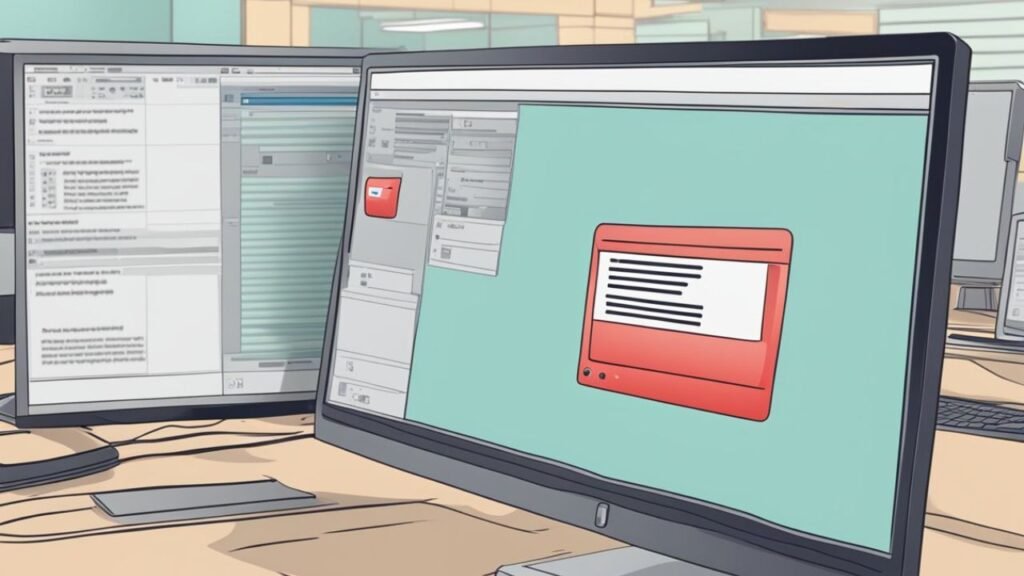Fixed! ErrorDomain=NSCocoaErrorDomain&ErrorMessage=Could Not Find the Specified Shortcut.&ErrorCode=4
Have you ever tried to use your shortcut on your apple computer but instead you saw the most irritating response: errordomain=nscocoaerrordomain\&errormessage=could not find the specified shortcut.\&errorcode=4? This is a common problem, which is faced when your device fails to locate the short cut that you want to utilize.
This mistake can frequently be the case because of the recent modifications carried out to shortcuts or modifications done within your iOS or macOS that might have altered them.
It is an issue that may present itself on iPhones, iPad or Mac devices and it leaves the user wondering what happened to the carefully crafted shortcuts. Luckily, even though the terminology used to describe this error might sound technical, it does not usually take any high-profile level of technical knowledge to resolve it.
A couple of simple steps of troubleshooting will help you activate your shortcuts again.
Understanding NSCocoaErrorDomain

The NSCocoaErrorDomain is highly important in the Apple system of error handling, relating to issues associated with the Cocoa framework. It can help the developers and users to diagnose shortcut, file handling, and other functionalities of the applications with relation to Cocoa.
Role in macOS and iOS Error Handling
NSCocoaErrorDomain is a marker indicating an error that could occur in the macro-OS due to the Cocoa framework, the basis of numerous applications in that OS, along with iOS. With the situation when you encounter an error relating to this area, it means that the issue relates to critical functions of the system, not external software.
This category of error is included in a more elaborate system of error reporting which is composed of:
- Error Domain: Indicates the subsystem, where the error occurred (here, NSCocoaErrorDomain)
- Error Code: A number (such as 4) that identifies the particular type of error
- Error Message: A comprehensible statement which tells the nature of the problem
As an instance where you could meet with the error code “could not find the specified shortcut” then it means that the system is not able to find a particular shortcut that is either being tried by an application or by the operating system.
Common Errors Associated with NSCocoaErrorDomain
Some of the common problems that appear within NSCocoaErrorDomain include instances that occur when the specified shortcut could not be found (error code 4). This problem usually occurs when the users attempt to enable keyboard shortcuts, file shortcuts, or application short cuts which have been deleted, moved or corrupted.
Other common mistakes of the NSCocoaErrorDomain are:
- File Not Found (Error Code 260): It is an error that the system cannot locate a file.
- No Permission (Error Code 513): It takes place when somebody tries to gain access to a file that he or she does not have the connectivity with.
- File Already Exists (Error Code 516) This error occurs when one is attempting to make a file with the same name as an on-going process.
These mistakes may greatly jeopardize normal activities and task achievement. The particular error codes also help get an idea of the problem behind it, leading to easier troubleshooting.
Troubleshooting ErrorCode 4

The error message as ErrorDomain=NSCocoaErrorDomain\&ErrorMessage=Could not find the specified shortcut.\&ErrorCode=4 portends that your system cannot find a particular shortcut. Although this may cause a drain to your productivity, the problem can be tackled and solved using effective strategies.
Causes Behind ‘Could Not Find the Specified Shortcut’
This problem normally occurs in Apple platform like macOS and iOS when the access to the shortcuts is faulty. The major causes of this mistake consist in:
Lack of files which the shortcut requires
Misidentified file paths which will point to a non existent region
- Lack of access privileges to the use of the shortcut file
- Network connection issues upon mentioning on shortcuts on resources being accessed online
- Alterations caused by the change of a system update that touch on shortcut setting
The mistake means that your device cannot locate a certain shortcut, which you want to use. Corrupted shortcut files as well as system caches problems may also cause the issue.
Step-by-Step Solution Guide
Confirm shortcut file integrity
- Make sure that the shortcut file is stored in the specified folder.
- Diagnose and determine whether file is corrupted by checking its properties.
Reset application permissions
- Go to System Preferences, and choose Security & Privacy.
- Make sure that your application possesses the permissions in order to gain access to your files.
Clear system caches
- Restart your device to eliminate the temporary cache.
- In case of issues, consider a cache-clearing program.
Recreate the shortcut
- Delete the old shortcut created that is creating problems then set up a new shortcut with different name and the same purpose.
In case of troubles, check whether there are missing files or incorrect directory locations which might be causing the problem. Otherwise, in the case of shortcuts in the systems level, an upgrade to the software can take care of the compatibility issue.
Preventive Measures and Best Practices

By activity, the user will not incur the error, which is executed easily in the following manner; errordomain=nscocoaerrordomain&errormessage=impossible de trouver le raccourci spécifié.&errorcode=4. Shortcut control and the lack of information about the restrictions of a specific system are the spice of the life of effective prevention of such a nuisance.
Designing Robust Error Handling
It is important to create a mechanism that can well handle shortcut errors in order to minimize the inconveniences met by the users. The programmers should use extensive error addressing that will be user-friendly by presenting a vivid descriptive error message in cases where the shortcuts cannot be applied.
Best practices include:
- Ensuring shortcuts are verified prior to their utilization.
- Establishing a backup system in cases where shortcuts are unavailable.
- Developing automated tests to confirm the reliability of shortcuts.
- Keeping a record of modifications made to shortcuts for diagnostic purposes.
Routine automated testing can promptly detect any absent or unreachable shortcuts before they impact users. This anticipatory strategy helps avoid issues in live environments.
Avoiding Common Pitfalls
There are several common mistakes that might cause NSCocoaErrorDomain shortcut error. Being aware of the issues can help an user maintain a stable system.
The main causes of this mistake usually contain:
- Changing shortcuts without changing related references
- System upgrades: The short-cut paths are altered
- Removing applications, which continue to be referenced by already existing shortcuts
- Adding invalid characters in shortcut names
To prevent the occurrence of any problems, users need to make a backup of their shortcuts before carrying out any changes in the system. Also, mistakes may be reduced by creating a unified naming scheme of shortcuts.
As a developer, it is imperative to make sure that a shortcut has not been made before performing any access action. Such a simple verification may prevent the need to meet the error at all.
Frequently Asked Questions
What steps can be taken to resolve a missing shortcut issue on a Mac?
As a way of reversing the problem of any missing shortcut, restart your Mac first to clear its system functions. This simple measure often rectifies the minor problems that can cause the mistake.
In case of the problem being repetitive, it is possible to make a new shortcut to the troubled item. Uninstall the existing shortcut and create a new one which will lead to the correct file or application.
You have to make sure that your system is current. The bug could be happening in case macOS is not the most up-to-date one, so upgrade it before proceeding.
How can file accessibility be restored when encountering a shortcut error in MacOS?
Shortcut problems are also often caused by problems on file permissions. To guarantee the appropriate access to the target file, right-click on it and select the option, Get Info.
But ensure that the location of the file will not change since the short cut was created. error 4 means that the resource you want to access is not at its correct place.
In the event that you need to reset the permissions, you can do this by clicking on the file, choosing the option of getting information and adjusting the sharing and permissions options at the bottom of the screen.
What troubleshooting methods should be followed when a shortcut cannot be located?
Step 1: To get started, you first need to employ the Spotlight (Command+Space) to find the original file and make sure it is present on your computer. specifically, 1 of the files may have been moved or deleted.
After this, you should restart your computer to Safe Mode in order to clear the system cache. This would assist in eliminating any temporary files which could be hampering the shortcuts.
Finally, you should ask yourself whether some new changes to your shortcuts could have caused the mistake. Alterations to shortcuts which have happened quite recently may be the reason of the problem.
Can permissions affect the ability to access shortcuts and how can these be corrected?
In fact, availability of shortcuts depends on the setting of permits. When such settings limit your access to read a certain file, most probably you will get an NScocoaErrorDomain error.
In case any permission-oriented issues appear, simply find the file or a folder in the Finder, press Command+I, and go to the section labeled as Sharing & Permissions. Make sure that your user id has been provided with Read & Write rights.
When the shortcuts exist at the system level, there will be a need to disable System Integrity Protection ( SIP ) through Recovery Mode, although this move should be taken carefully.
What role does the NSCocoaErrorDomain play in shortcut-related errors?
The NSCocoaErrorDomain is the error reporting framework provided by Apple, featuring a number of problems experienced in the macOS application.
In presence of shortcuts, 4 error code indicates presence of a location issue in resources. This domain of error would assist the developer and the user to diagnose error problems since it provides consistent codes of error.
Part of the code 4 specifies non existing files or inaccessible resources.
NSCocoaErrorDomain is a place where any code of error is related to separate problems. As an example, there is code 518 regarding the URL types which are not supported.
How can one prevent recurrent shortcut errors in MacOS applications?
Be sure to update the macOS frequently to keep your operating system and applications in harmony since updates usually address frequent shortcut problems.
Proper creation of shortcuts: you should use the option of making alias in Finder as opposed to merely copying and pasting the icon. This assures that the system tracks the exact locality of the original file.
Use Time Machine to backup the necessary shortcuts. This offers an easy means of reviving them in case they sustain damages or in case alterations to the system affect them.







